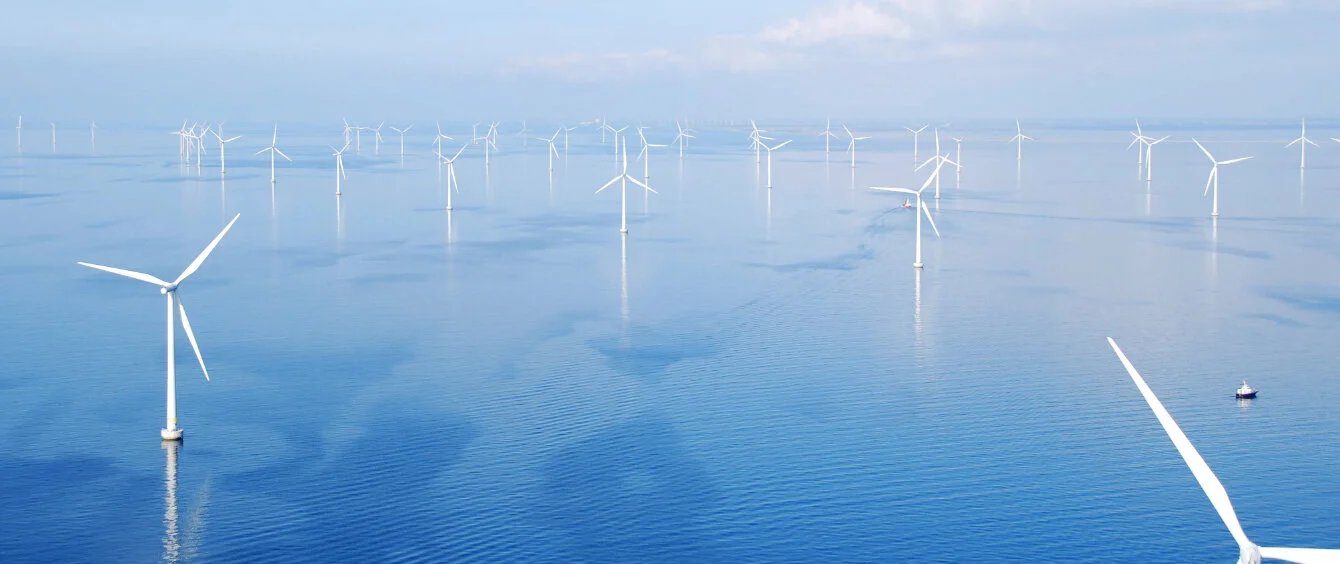Offshore wind requires an unprecedented scale of deployment over the next decade, according to the Global Wind Energy Council (GWEC), which published its Global Offshore Wind Report 2021 in September.
Targets and current rates of deployment remain below those necessary to hold the global rise in temperatures to 1.5°C above pre-industrial levels, based on the analyses of organisations like the International Energy Agency (IEA) and the International Renewable Energy Agency (IRENA), GWEC says. Yet the World Bank has identified more than 71,000 GW of technical resource potential globally, nearly 10 times the world’s current electricity capacity.
6.1 GW installed in 2020
Covid-19 hit hard in 2020, but the offshore wind industry still recorded its second best year in terms of new capacity with 6.1 GW installed, compared with 6.2 GW in 2019. China led the field for the third year running with 3.1 GW and has now overtaken Germany as the second largest offshore wind market in terms of installed capacity, behind the UK. Europe installed 2.9 GW of new capacity last year, the majority in the Netherlands, which brought nearly 1.5 GW online.
GWEC sees similar levels of deployment in 2021 and 2022, increasing in 2023 as utility-scale projects start to come onstream in France. Then, as expanding traditional markets in the UK, Denmark and Germany are joined by developments in the Baltic Sea, annual European installations rise from 10 GW in 2026 to hit 20 GW/yr by 2030.
Worldwide, offshore wind capacity grew to 35.3 GW in 2020, compared with the 270 GW envisaged by IRENA by 2030 to maintain a 1.5°C pathway, a total which needs to rise to 2,000 GW by 2050.
New markets
New markets are essential to accelerated deployment. The US was notable for 5.5 GW of state-issued solicitations in 2020, making up the bulk of the 7 GW of new wind auctions and tenders launched last year. Japan issued its first auction for both fixed-bottom and floating offshore wind, marking a new departure for a broadening Asian market.
GWEC forecasts that as more countries enter the sector, annual installations globally could reach 25 GW by 2025 and potentially 40 GW by 2030, with Europe accounting for about half, Asia reaching 14.5 GW and North America 4.4 GW.
The majority of growth outside of Europe is seen in China, Taiwan and Vietnam, while the US, Japanese and South Korean markets will make a bigger contribution from 2024 onward, GWEC estimates. Within Europe, the UK is expected to remain the biggest single market, adding 4 GW/yr by 2030.
Lower costs and greener footprint
GWEC says: “offshore wind has become the most competitive electricity generation technology after onshore wind and solar.” Moreover, its ability to facilitate a more ‘circular’ economy is a key advantage. Take steel, for example, an essential component of offshore wind farm construction. Scaled-up offshore wind can produce green hydrogen, which in turn can decarbonise steel production.
Wind turbine manufacturers are taking other steps to reduce their environmental footprint. Amid a number of projects to improve the recyclability of wind blades, Siemens Gamesa in September announced the launch of the first fully recyclable wind turbine blade for commercial use offshore.
Key pillar of the energy transition
There is no doubt that offshore wind is a critical component of the global energy transition. It is a huge resource evenly distributed across the world and accessible to developing and developed countries alike. The creation of local supply chains creates new employment and supports the circular decarbonisation of local industry, GWEC says.
New approaches, such as floating offshore wind, will unlock its potential further. But to achieve higher rates of growth the sector needs government support – not in the form of subsidies, but in terms of revenue certainty, as, for example, provided by the UK’s contract for differences scheme, and improved permitting processes, the report argues. Streamlined permitting and sustained government policy support are central to harnessing one of the world’s largest and most readily-accessible renewable energy resources, GWEC says.
Photo credit: © RWE AG
